The evolution of Steph Curry: The man the NBA can't take its eyes off

Recently, Dirk Nowitzki was at home on the couch when his infant son fell asleep on his chest. He was now trapped, as any parent knows, at the mercy of baby slumber. But in Nowitzki’s case, he wasn’t concerned. As he explains: “The Warriors were on and I got to watch Steph!”
This is where we are now: Everybody wants to watch Stephen Curry, even Hall of Fame opponents. We live in an age populated by some of the greatest talents in NBA history—soaring giants like LeBron James, Kevin Durant and Anthony Davis—and yet the player many would pay the most to see live is a thin, 6’3" guard with regular-guy hops.
We watch Curry for the no-look lobs, and the sideshow dribbling but, most of all, for the Oh Come On moments: those crazy step-backs and rocket launcher threes and reverse layups that go in with stunning regularity. Last Wednesday against the Suns, Steph was fouled and absent-mindedly flipped up a running 27-footer. Naturally, it banked in. He crossed-up Jon Leuer twice, hopped back and arced in a ridiculous fadeaway three. But my favorite OCO moment came hours earlier, near the end of his pregame shooting routine. Heels planted on the blue halfcourt circle, Curry shot a sequence of 40-footers, his form no different than on a midrange J: shoulder firing, wrist snapping, body aligned. Around him, his peers pretended not to watch but snuck glances. Media and assistant coaches stopped and gazed. In the stands, the early arrivers brandished iPhones, hoping to capture a piece of Steph for themselves.
Year In Splash: Stephen Curry's most memorable performances from 2015
In the end, Curry made 5-of-8. From just inside half court. And here’s the crazy part: When he missed, it was strangely disappointing, like watching a magician bungle a trick. This is absurd, of course; our baseline expectation of the guy is that he remain quarantined in the zone. That he be inextinguishable.
So natural does Curry’s dominance seem now that it can be easy to forget he was once deemed too frail for Division I basketball, too small to play in the NBA, too injury-prone to be a franchise player and too elfin to ever grow a proper goatee. With the arguable exception of the last point—there is a fair amount of scraggle to Curry’s chin, and one surmises it’s an old-growth situation—he has surmounted every challenge he’s faced.
Here’s a look back at his evolution, from one reporter’s perspective.
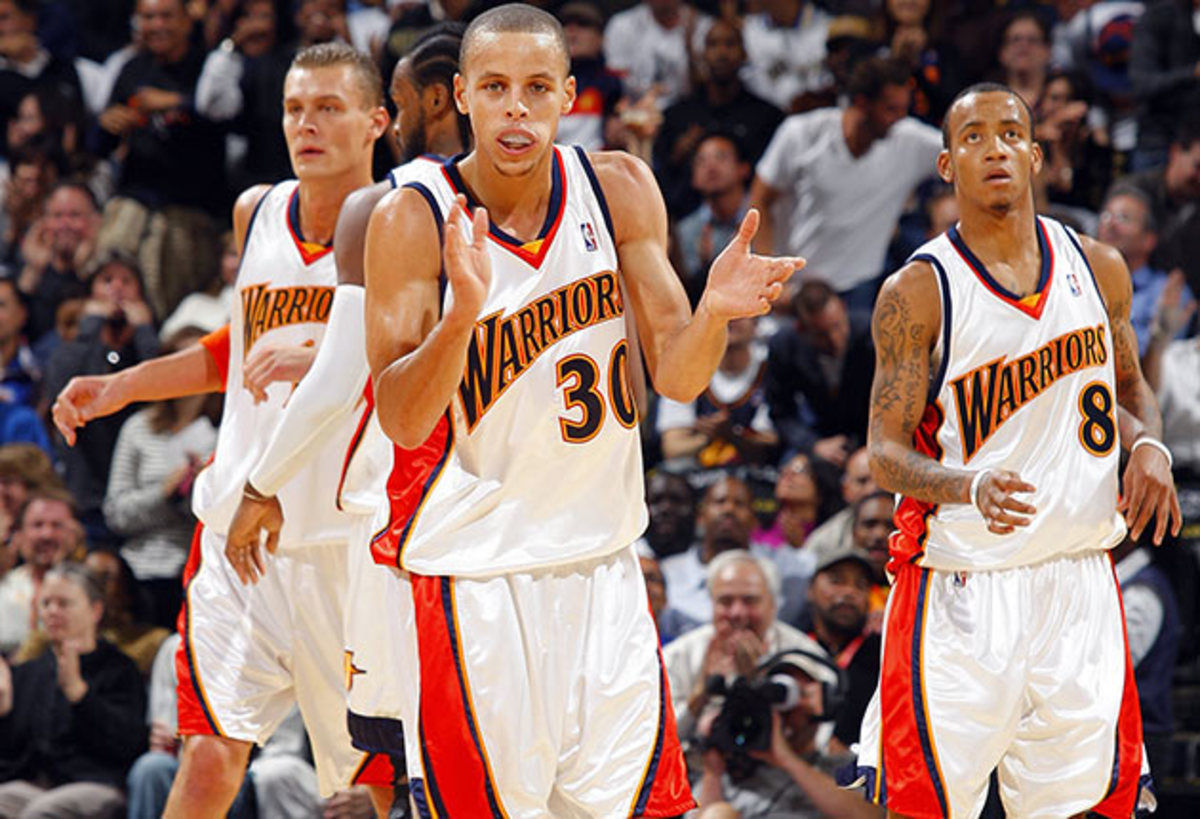
October 28, 2009: Curry’s NBA debut vs. the Rockets, at Oracle Arena.
A sell-out crowd. The Oakland faithful roaring, ever-optimistic despite years of contrary evidence. Nellie on the sideline and, because he’s on the sideline, the rookie Curry is playing 35 minutes, second-most on the team. He scores 14, with seven assists and four steals. He attempts only one three-pointer. He misses it.
Scribbled notes from the night include thought on his passing (opportunity to be Nash-like?), a surprising ability to create shots off the dribble, and the remarkably poor chemistry of the Warriors (Corey Maggette going 1-on-4 while, on the other wing, an open Stephen Jackson jumps up and down like a man on fire, waving his arms and shouting for the ball). Curry does not, on first blush, appear to be a lights-out NBA shooter. Too much push to his shot. Still, he is composed. Postgame, two Rockets players mention Curry’s “poise.”
He’ll need it. By season’s end, Jackson is gone, the Vladimir Radmanovic era is in full swing and the Warriors have lost thirty more than they’ve won.
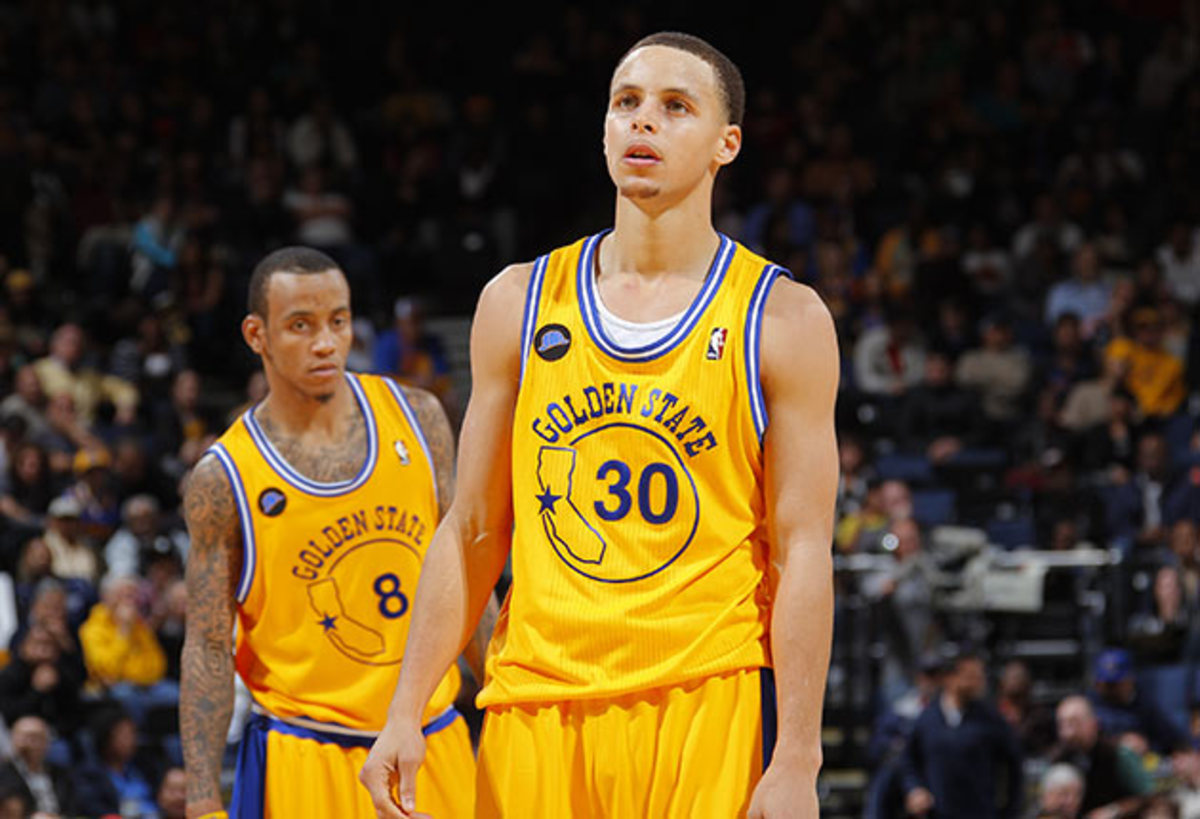
January 2011: The Warriors are still mired in the pre-Splash morass. It’s prime Cohan era, before Lacob and Myers and Bogut and Klay.
On a weekday afternoon, Dan Martinez, longtime Warriors media guy, leads the way to the elevator in the lobby of an apartment complex overlooking Lake Merritt in Oakland. The building, 1200 Lakeshore, is popular with Warriors players. For a while, Nellie rented the penthouse suite, spending his nights watching hoops and smoking stogies on the balcony.
Curry’s apartment is athlete-friendly: pool table in the living room, views out across the Bay. At the time, he’s preparing for a visit from, as he calls her, “my girl”, Ayesha, then his girlfriend and now his wife. He has stocked the fridge with Whole Foods groceries. Fresh flowers rest on a table. His parents have taught him well.
Class Picture: Stephen Curry has it all
Sitting on the couch, he shows off his lone tattoo, on his left wrist—the Davidson hoops motto of T.C.C. (“trust, commitment, care”). He talks about how Virginia Tech wanted to redshirt him, and how he’s trying to learn to do, “that Nash thing” where Steve, “Does like eight circles around the paint until he finds a man open and [doesn’t make] his decision before he’s ready.”
In his second season, Curry’s in a difficult position. He plays alongside a similar talent, Monta Ellis, who openly questioned Curry during their first year together. His champion, Don Nelson, is now gone, pastured to retirement in Maui and replaced by Keith Smart, a man searching for job security. Frustrated by Curry’s turnovers, Smart benches him late in games in favor of once and future journeyman Acie Law. History will not regard this choice favorably.
Curry is trying to keep life in perspective. He talks about how he, “walked on eggshells” around Ellis during that first season and how, “there were a lot of good things that happened, so I’ll remember those and not the circus times we had.” Parts of the conversation seem, in hindsight, almost comical. Curry talks of struggling not to be “passive.” He says, “I can’t just disappear on the floor” when Ellis has the ball. He talks of emulating Ben Gordon, the then Pistons guard, because of Gordon’s lower body strength. “Every time he gets into a shot it’s like he’s doing a front squat and it’s perfect mechanics all the way through,” says Curry. “He really extends on it, so that’s why he makes those tough shots with that guy in his face.”
But what stands out, reading the transcript now, are two things. First, at 22, Curry was already focused on the big picture. He framed all obstacles—Ellis, Smart, the situation in Golden State—as learning experiences in a longer journey. He says things like, “Hopefully I have a long career and you know that one bad year, you can’t let that go to waste just because you know you’re having a rough season. For me it’s just about being a good professional.”
Second, it’s interesting how similar he sounds to his future coach, Steve Kerr. Just as Kerr will one day, Curry talks of process and “controlling what you can control” and the focus forever being on, “getting better and having fun with the game.”
Regrettably, the story never ran—it wasn’t easy to convince East Coast magazine editors to run a story on the Warriors at the time—but I remember leaving the apartment impressed. Even then, Curry had a presence.
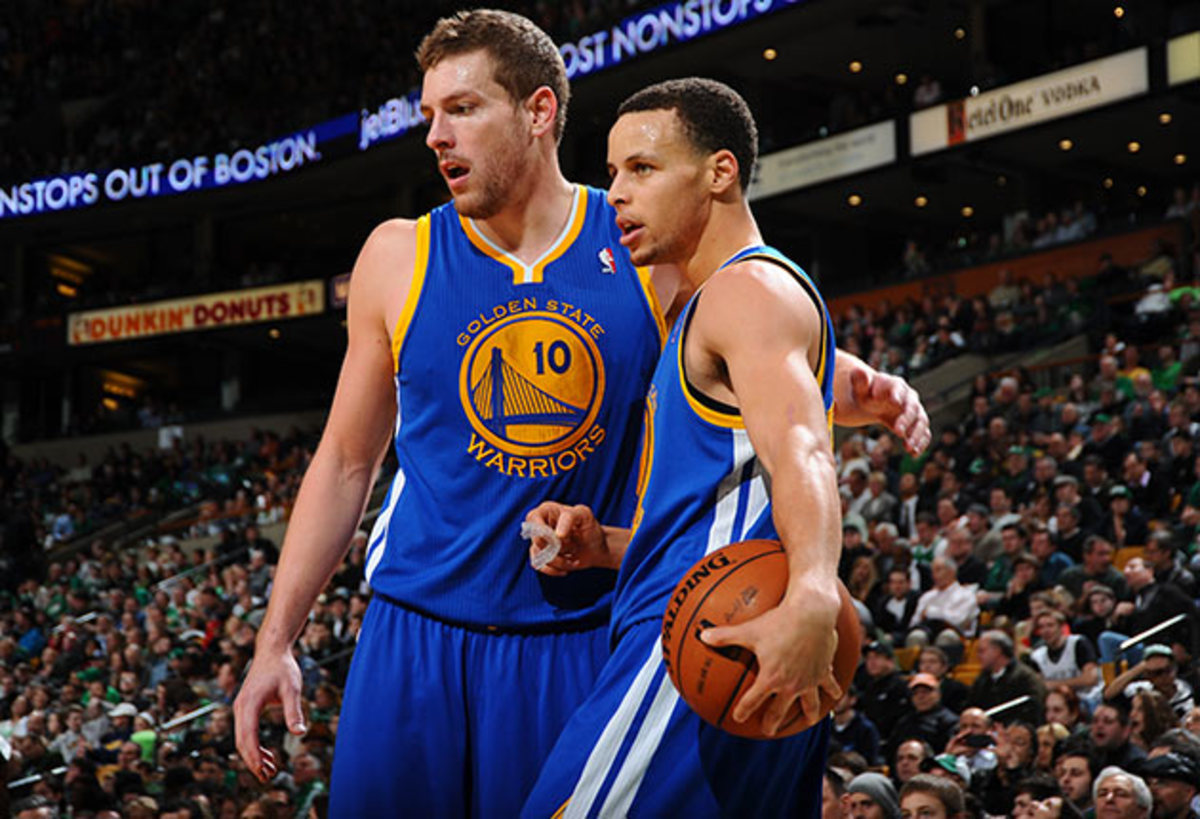
April 2013. The Warriors are headed to the playoffs for the first time in ages. But it’s David Lee who is the team’s All-Star.
As for Steph? He’s viewed by many as a shooting unicorn: all offense, no defense.
Still, that offense. He leads the league in three-pointers made, hitting 45.3%. He breaks 20 points per game for the first time, but he has yet to catch on nationally. It seems strange. Maybe it’s his perceived normalcy. Six months later, at an SI cover shoot, the photographer asks Curry to palm a basketball. He tries, succeeds for a few seconds, then drops the ball. He tries again. No luck. Finally, Warriors PR guru Raymond Ridder brings over a needle and deflates the ball a bit.
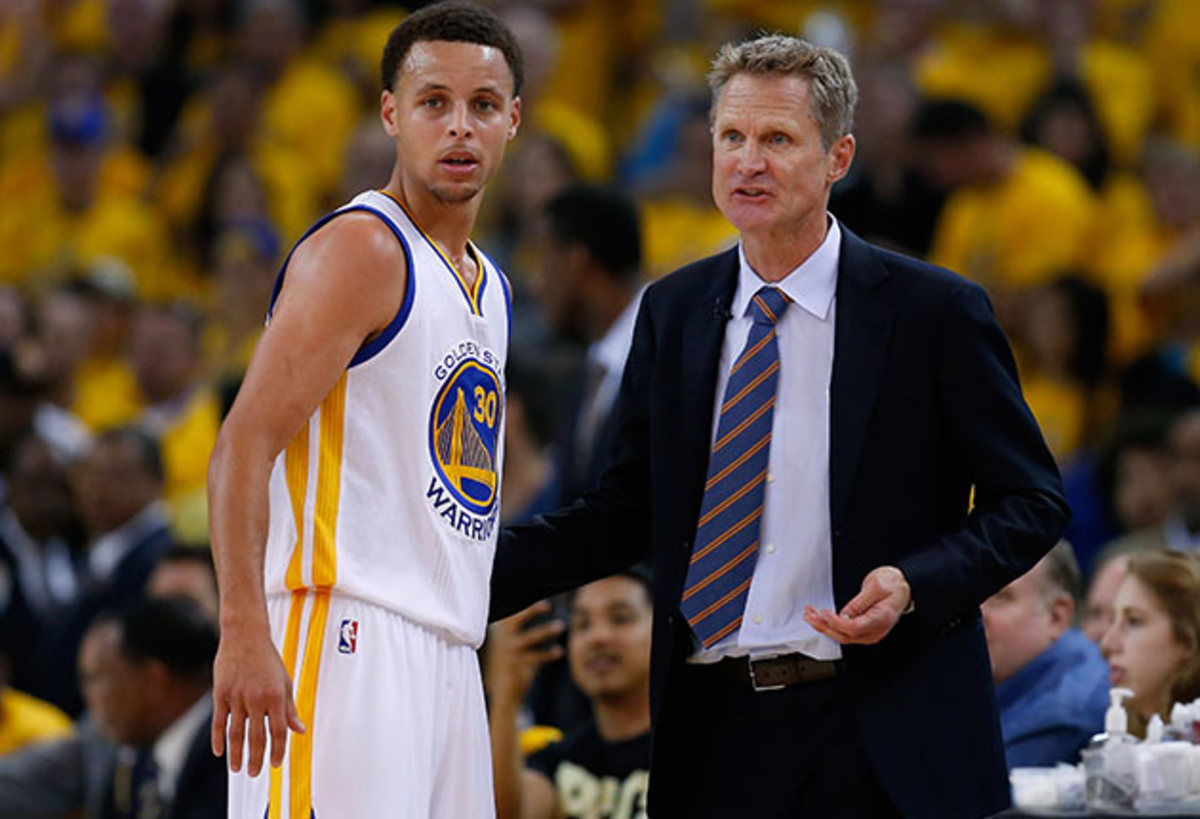
February 2015: Golden State is firing on all cylinders under Steve Kerr.
Even so, there’s still talk of caterpillars and butterflies, of regression to the mean, of jump shooting teams destined to fail.
It’s mid-afternoon at the Warriors practice facility in Oakland and Curry is trying to throw the ball, QB-style, and hit a basket from roughly 80 feet. He misses once, then again and again. Nearby, Kerr watches, smiling but becoming more concerned. The last thing he wants Curry doing is blowing out his shoulder because he’s finally found a shot he can’t hit. Finally, with a nervous chuckle, he cuts off his point guard.
Sports Illustrated tabs Stephen Curry as the 2015 NBA Player of the Year
By now, Curry is a complete player. In a couple weeks, he will make his second All-Star start, this time as the leading vote-getter. Sitting on a blue mat after practice, he talks about running the new, democratic Kerr offense, and the lack of drama on the team, and his improved defense, which he attributes in part to becoming like, “that slim dude at the YMCA that doesn’t get pushed around, the guy with man strength.”
Despite his success, he doesn’t sound any different than he did at 22, amid the turmoil and the losing. He’s confident but not cocky, self-deprecating but not insecure, thoughtful but not introspective.
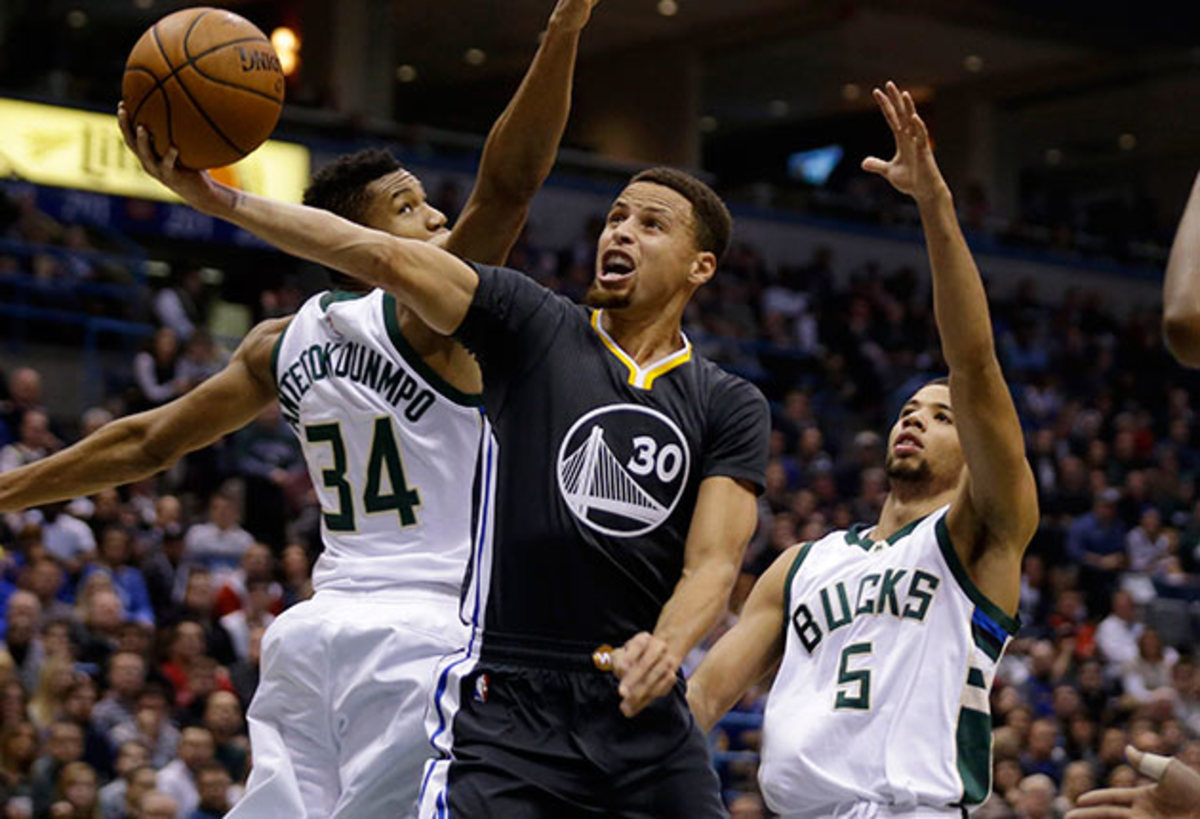
Present: It's now clear that Curry is no way like us, or normal. He is closer to a basketball extraterrestrial.
The New York Times asks ballet dancers to attend a Golden State game to weigh in on Curry’s grace. Statheads try to determine if his torrid shooting from 26-plus feet this season is sustainable, despite every historical indicator suggesting it’s not (Their answer: maybe?).
Every night is a show. At home against the Suns on Dec. 16, the first game after the end of the win streak, the Warriors start slow. Then, in the third quarter, the wave builds, crests and crashes all at once. Forty-six points in 12 minutes. Klay Thompson drops 27 in the quarter; Curry goes 5-of-5. Watching the blitz, a thought occurs: We’re more than halfway through an incredibly entertaining game and, to the best of my memory, no one has dunked. There was a time, not so long ago, when people went to NBA games in part just to see dunks: breakaways and follow slams and even those trampoline-propelled mascot abominations.
Going with the flow: Warriors cruising toward history with an unlikely leader
Now? Now people watch the Warriors to see everything but dunks. Rather, we come for the passing and the shooting and the chemistry and the OCO moments. When Suns forward Mirza Teletovic finally throws down the first slam of the Suns game, no one cares. Neither do they much care when, a few minutes later, Curry gets a breakaway, tries to dunk it and misses—pretty badly, really—but the ball rattles in anyway, after which he jokingly stares at his hand. That’s your MVP: the guy who can sorta, kinda on-the-right-day dunk. (In fairness, Curry regularly throws down two-foot slams in practice).
After the game, dozens of media members surround Curry’s locker: Three from ESPN, two from Yahoo, a horde from local outlets, some assorted bloggers, even a writer from the in-flight magazine of American Airlines. Curry turns around, appraises the masses, says, “Whoa.” Once upon a time, a Wednesday night game against a mediocre team meant an intimate evening for Warriors reporters. Now it’s all chaos, all the time. “At any time we have so many requests for Steph that we don’t even have the time to sit down with him and go over them all because it would take so long,” says Martinez. On the Warriors’ most recent road trip, Curry was routinely cheered in enemy arenas. The locker room in Brooklyn was apparently so packed with press that players could barely move. Ridder estimates the Warriors’ winning streak “doubled” both the team and Steph’s brand awareness.
And yet, ask people around the team and they’ll tell you that Curry remains the same person he was seven years ago. “Like exactly,” says Martinez, a longtime golfing buddy and one of the few staffers who was around when Curry joined the team (Curry recently brought Martinez along on a golf trip to Bandon Dunes in Oregon, along with Andre Iguodala and others). Says Martinez: “He has a remarkable ability to compartmentalize it all.”
It’s a rare thing for an athlete of Curry’s age, and stature. Fame of that magnitude is often distorting. On this night, once the crowd disperses, he’s reminded of the conversation in his apartment five years ago—of Ellis and Ben Gordon and the rest—and asked if he can still recall that mindset, of discord and “disappearing.” He stops, thinks for a moment. “Yeah, I can,” he says. “I know exactly the emotions I had at that point. Trying to get out of my game and frustrations that I was going through.” He pauses. “The Ben Gordon one, that’s pretty funny, because that's what I envied most back then, being able to count on that when I played heavier minutes and guys bumping on me, and always having that base and wanting the opportunity to make plays down the stretch of games.”
Neither is Curry surprised to hear that, even then, he sounded similar to Kerr. “Not to knock other coaches, but that’s what he does best is understand the process of things and how you get to where you want to go and not fast-forwarding ahead but staying in the moment with what you can control.”
And what of Curry—can he stay in the moment and enjoy all this? “Sometimes it gets a little crazy, but for sure,” Curry says. Then he pauses. “How can you not?’
It brings to mind a scene from earlier in the night: Ridder, singing Curry’s praises in a hallway outside the Warriors locker room, 45 minutes before tip-off. As Ridder spoke, Curry exited pregame chapel behind him and, seeing the PR man’s back turned, looked at two reporters and smiled. Then he reached out and pretended to palm Ridder’s smooth dome, as if it were a shiny white basketball. None the wiser, Ridder kept talking.
Steph chuckled, then headed down the hall. And if you didn’t know better, you’d swear he was just another guy goofing his way through the world, the most normal anomaly you’ve ever seen.
